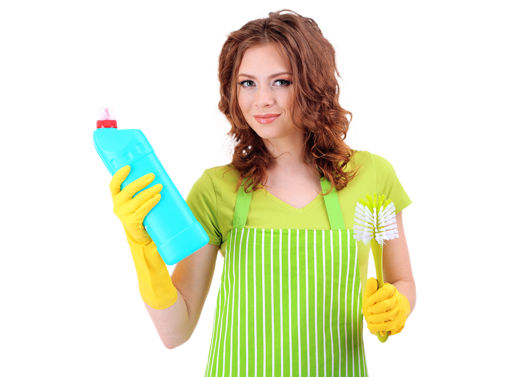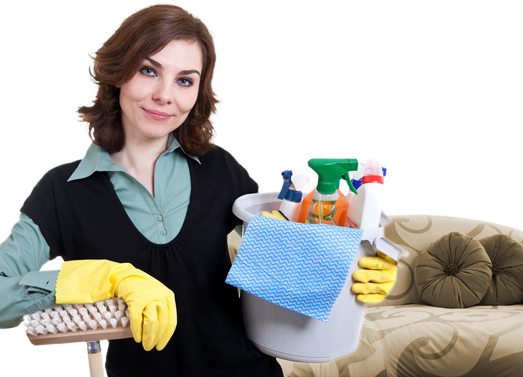Unlock the Secrets of Cleaning Burnt-on Stovetop Grime
Posted on 30/08/2025
Unlock the Secrets of Cleaning Burnt-On Stovetop Grime
Are you tired of stubborn, burnt-on grime ruining the sparkling look of your stovetop? If scrubbing for hours with little to show for it sounds familiar, you're not alone. The kitchen stove is often the heart of the home, but it's also prone to spills, splashes, and stubborn residue. In this comprehensive guide, you'll unlock the secrets of cleaning burnt-on stovetop grime effectively--restoring your stovetop to its original shine with expert tips, safe supplies, and maintenance hacks.

Why Does Burnt-on Grime Build Up on Your Stovetop?
*Burnt-on grime* accumulates as a result of food spills, grease splashes, and high heat. When you cook, especially with oil or sugar, splatters can harden and stick stubbornly to the stovetop surface. Many people overlook daily cleaning or use incorrect products, which allows residue to build up and become even more difficult to remove.
The Risks of Leaving Stovetop Grime Unchecked
- Unsanitary Cooking Area: Bacteria, mold, and pests can thrive in a dirty environment.
- Unpleasant Odors: Charred food remnants give off lingering smells when heated.
- Reduced Appliance Lifespan: Continuous buildup may damage components and impair performance.
- Fire Hazard: Excessive grease or residue can ignite under high temperatures.
For these reasons, learning how to clean stubborn stovetop stains is crucial for your family's health and kitchen safety.
The Comprehensive Guide to Cleaning Burnt-On Stovetop Grime
Step 1: Gather Your Stovetop Cleaning Supplies
- Baking soda
- White vinegar
- Lemon juice
- Dish soap
- Non-abrasive scrubbing pads or microfiber cloths
- Plastic scraper or spatula
- Spray bottle
- Paper towels or soft rags
- Optional: Commercial stovetop cleaner
(If you have a gas stove, remember to remove grates and burner caps for deep cleaning.)
Step 2: Pre-Clean for Better Burnt-On Grime Removal
- Switch off the stove and ensure the surface is cool.
- Wipe loose debris, crumbs, and liquid with a damp cloth.
- Soak removable parts (grates, burner caps) in hot, soapy water for 15-30 minutes.
Step 3: How to Loosen Burnt-on Stovetop Grime
- Create a natural solution: Mix equal parts of water and vinegar in a spray bottle.
- Liberally spray the stovetop: Focus on burnt, hardened spots. Let the mixture sit for 10-20 minutes to soften residue.
- For extra tough spots: Sprinkle baking soda onto wet grime, forming a paste that helps break down stains.
Tip: The fizzing reaction of baking soda and vinegar acts as a gentle abrasive and lifts persistent stains.
Step 4: Scrub the Grime Away--Safely and Effectively
- Use a damp, non-abrasive scrub pad or microfiber cloth to clean the surface in circular motions.
- For more stubborn, caked-on spots: Gently use a plastic scraper at a shallow angle--never metal, as it can scratch most stovetops.
- Repeat the baking soda paste application as needed.
Step 5: Rinse and Buff to a Shine
- Wipe away any loosened grime with a clean, damp cloth.
- Rinse the stovetop with a fresh cloth and plain warm water to remove cleaning residue.
- Buff dry with a microfiber cloth or paper towel for a streak-free, gleaming finish.
Special Tips by Stovetop Type
-
Glass or Ceramic Stovetops:
- Always use soft cloths and plastic scrapers to avoid scratches
- Consider specialized ceramic cooktop cleaners for heavy buildup
-
Gas Stoves:
- Clean grates and burners with hot, soapy water and a brush
- For grime inside burner holes, use a toothpick--not metal objects
-
Electric Coil Stovetops:
- Wipe coils with a barely damp cloth when cool
- Clean drip pans with baking soda paste and rinse thoroughly
Alternative Methods to Remove Burnt-On Stovetop Grime
Sometimes, the standard routine isn't sufficient. Try these supplementary solutions for especially tough messes:
1. Steam Power
- Fill a spray bottle with water and generously mist the entire stovetop.
- Lay wet paper towels or a cloth over the affected area.
- Turn burners to low for a few minutes (if safe, and only for gas/electric coil stoves), allowing steam to help loosen grime.
- Turn off heat, let cool, then wipe clean.
2. Commercial Degreasers
- Products labeled as grease removers or stovetop cleaners can dissolve thick, oily residue.
- Always follow manufacturer instructions and ventilate your kitchen.
- Test on a small area first to ensure compatibility, especially on delicate surfaces.
3. Lemon and Salt Scrub
- Cut a lemon in half and dip it in sea salt.
- Gently rub over burnt residue--natural citric acid and salt combine to clean and deodorize.
4. Razor Blade Method (For Glass Stovetops)
- Only use this for smooth glass surfaces.
- Hold the razor blade at a 45-degree angle and carefully scrape up burnt-on grime.
- Do not dig or gouge. Always follow with a cleaning wipe and buff dry.
Common Mistakes to Avoid When Cleaning Burnt Stovetop Stains
- Never use steel wool or harsh scouring pads on glass or ceramic as they scratch and dull the finish.
- Avoid abrasive powders unless specified as safe for your stovetop's surface.
- Don't mix harsh chemicals (like bleach and ammonia); this can produce dangerous fumes.
- Never use excessive water around electric or gas components--moisture can damage parts or pose safety risks.
- Skipping the rinse: Always wipe away cleaner residues to avoid gummy buildup and food contamination.
Frequently Asked Questions: Expert Answers on Cleaning Burnt-On Stovetop Grime
How Often Should I Clean My Stovetop?
For the cleanest and safest kitchen, wipe down your stovetop after each use. For deep cleaning (focusing on burnt-on stains and crevices), aim for once a week or after major meal preparations.
What's the Best Way to Prevent Burnt-On Grime?
- Clean spills right away before cooking them onto the surface.
- Use splatter guards for frying, sauteing, or simmering sauces.
- Deep clean grates and drip pans regularly to prevent buildup.
- Establish a routine: Even five minutes daily will prevent heavy residue.
Which Natural Ingredients Are Effective for Cleaning?
Baking soda, white vinegar, lemon juice, and salt are gentle yet surprisingly powerful. They cut through grease, lift stains, and neutralize odors without harming your stove or the environment.
Is It Safe to Use Ammonia on Stovetops?
While ammonia is effective for heavy-duty degreasing, its fumes can be toxic. It is best reserved for cleaning oven racks or outdoor-use, and it should be handled with *extreme caution*. Avoid ammonia on glass or ceramic stovetops.
Maintain Your Stovetop: Secret Habits for Spotless Shine
- Keep a microfiber cloth handy for daily wipe-downs.
- Cover burners or drip pans with liners for easy removal and cleaning.
- Soak removable parts weekly in soapy water to dissolve grease and burnt bits.
- Set a reminder for a monthly deep clean--consistency is key.
Finishing touches include buffing the stovetop surface with a dry microfiber towel for a streak-free sheen and a spritz of white vinegar for added sparkle.

Why It's Worth the Effort: The Benefits of a Clean, Grime-Free Stovetop
- Appetizing Appearance: A pristine stovetop makes cooking more enjoyable and your whole kitchen more inviting.
- Improved Cooking Results: Burnt residue can alter the flavor and smell of food. Clean surfaces promote better, more consistent heating.
- Longer Appliance Lifespan: Removing stubborn, burnt-on gunk regularly prevents corrosion, rust, and malfunction.
- Safer Cooking Environment: A clean stovetop minimizes the risk of smoke or grease fires.
- Higher Resale Value: If you plan to sell or rent your home, kitchen cleanliness makes a strong impression.
Conclusion: Transform Your Kitchen by Unlocking the Secrets to Cleaning Burnt-On Stovetop Grime
With the right cleaning routine, smart habits, and the power of proven ingredients, burnt-on stovetop grime is no match for you! Remember, prevention and quick cleanups are your best allies, but even tough, stubborn residue can be conquered with patience and expert methods. Whether you rely on baking soda and vinegar or occasionally reach for a commercial degreaser, these deep cleaning stovetop secrets will leave your kitchen shining--and your cooking more enjoyable than ever!
Now, get started and see the transformation for yourself. Your gleaming, residue-free stovetop awaits!




